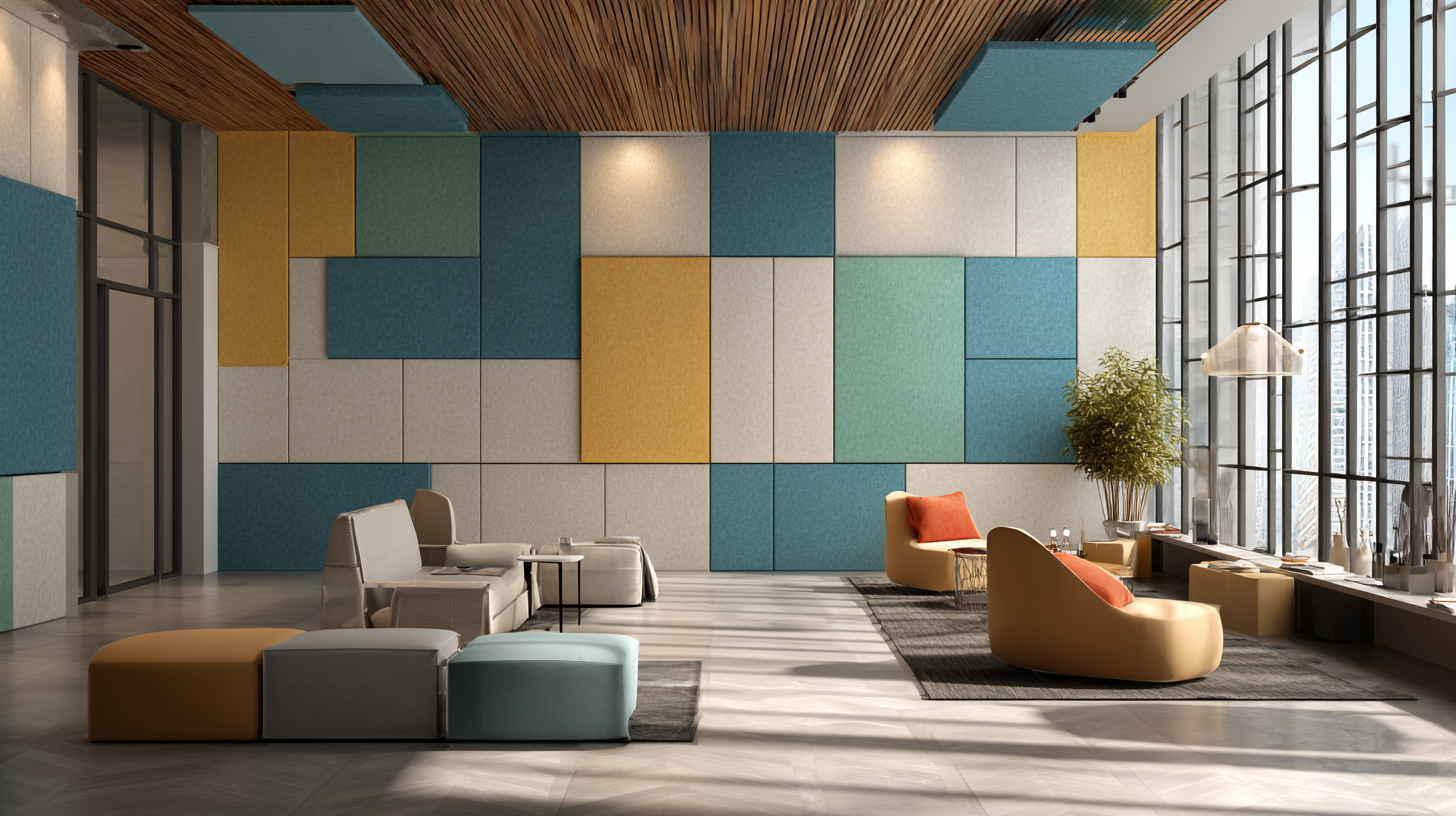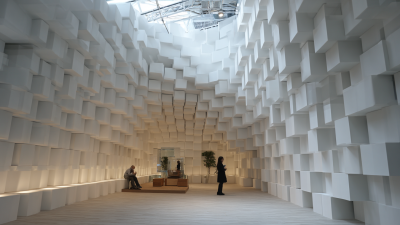Creating a tranquil environment in your home or office can significantly enhance your well-being and productivity. One effective way to achieve this transformation is through the use of noise dampening panels. These innovative solutions not only improve the acoustic quality of a space but also add an aesthetic touch to your decor. Whether you live in a bustling city or work in a busy office, understanding how to choose the right noise dampening panels can make all the difference in cultivating a peaceful atmosphere.
In this ultimate guide, we will explore the top 10 noise dampening panels available in the market, highlighting their unique features and benefits. From various materials to stylish designs, you'll learn how these panels can effectively minimize unwanted sound and create a serene environment tailored to your needs. By the end of this guide, you'll be equipped with the knowledge to select the perfect noise dampening panels that suit both your functional requirements and design preferences, ultimately transforming your space into a haven of peace and comfort.

When choosing noise dampening panels, understanding sound absorption metrics is crucial for creating a serene environment.
The most important metric to consider is the Noise Reduction Coefficient (NRC), which measures the ability of a material to absorb sound across a range of frequencies. According to industry research conducted by the Acoustical Society of America, NRC values range from 0 to 1, where a higher value indicates better sound absorption. For optimal results, panels with an NRC of 0.80 or higher are recommended, effectively reducing sound reflections and creating a more peaceful atmosphere.
Additionally, the impact of panel thickness and material composition cannot be overlooked. A study published in the Journal of the Acoustical Society of America highlights that thicker panels generally provide better sound absorption. For instance, a 2-inch thick panel can absorb up to 30% more sound energy compared to a 1-inch thick panel.
Common materials such as fiberglass and foam are often used for their superior acoustic properties, but performance can vary significantly based on density and surface texture. Thus, selecting the right combination of these factors is essential for achieving the desired level of noise reduction in your space.
When it comes to enhancing acoustic control in any space, the choice of materials used for noise dampening panels is crucial. According to the Sound Research Institute, effective noise control can reduce unwanted sound by up to 60%, significantly contributing to a more peaceful environment. There are several materials widely recognized for their sound-absorbing properties, with fiberglass and foam being the most popular among designers.
Fiberglass panels, for example, offer a high Noise Reduction Coefficient (NRC) rating, often exceeding 0.90, which means they can absorb up to 90% of sound waves within a specified frequency range. This material is excellent for both residential and commercial applications, providing not only exceptional sound control but also fire resistance.
On the other hand, acoustic foam panels, while typically used in studios and entertainment spaces, also perform admirably in common areas and offices. Their lighter weight and affordability make them accessible choices for those looking to minimize noise without breaking the bank.
Another innovative option is mass loaded vinyl (MLV), a dense material that excels at blocking sound rather than absorbing it. According to the Acoustic Society’s guidelines, MLV can decrease sound transmission loss by up to 20 dB, making it an ideal choice for walls, ceilings, and floors in environments where quiet is paramount. Each of these materials offers distinct advantages, allowing individuals to tailor their approach to noise dampening based on specific needs and budgets.
When it comes to maximizing the efficiency of noise dampening panels, proper installation is crucial. Begin by assessing your space to identify the primary sources of noise and the most appropriate locations for your panels. This often includes walls, ceilings, and areas around windows. It's important to ensure that the panels are mounted at strategic points that align with the frequencies of the noise you are trying to dampen. Placing panels at first reflection points—areas where sound first reflects off surfaces—can significantly enhance their effectiveness.
In addition to placement, the materials and adhesive methods you choose can greatly influence the performance of your panels. Opt for high-density foam or fabric-wrapped panels, as they offer superior sound absorption qualities. For installation, consider using a combination of adhesive and mechanical fasteners, ensuring a secure fit that won’t compromise the integrity of the material over time. Finally, do not overlook the importance of aesthetics; integrating panels in a way that complements your décor can maintain a pleasant environment while achieving the desired sound dampening effect.

When considering noise reduction solutions, evaluating the return on investment (ROI) is crucial for various spaces, from offices to home environments. According to a report by the World Health Organization (WHO), excessive noise can lead to significant health issues, costing economies up to $3 trillion annually in related healthcare expenses. Implementing noise dampening panels can be a cost-effective approach, often leading to decreased stress levels and enhanced productivity among occupants. A study by the National Institute of Occupational Safety and Health (NIOSH) highlighted that workplaces with improved acoustic environments saw employee productivity increase by up to 15%.

Furthermore, the upfront costs of noise dampening panels can be offset by their long-term benefits. A report from the Environmental Protection Agency (EPA) indicated that companies investing in soundproofing and smart acoustic design have seen an ROI as high as 300% over five years due to reduced absenteeism and improved employee morale. Homes equipped with quality sound panels not only enhance comfort but can also increase property value—an attractive proposition for homeowners and real estate investors alike. This makes the decision to invest in noise reduction solutions a prudent choice for achieving a peaceful environment while maximizing financial returns.
Sound pollution is an often-overlooked challenge in various environments, from bustling urban offices to serene healthcare settings. Effective noise dampening not only enhances comfort but also boosts productivity and mental well-being. For instance, a leading healthcare facility integrated acoustic panels in patients' recovery rooms, resulting in significantly reduced stress levels and improved sleep quality. This case illustrates the profound impact that thoughtfully chosen noise dampening solutions can have on patient outcomes in high-stress areas.
In another notable example, a tech startup transformed their open-concept office by strategically placing sound-absorbing materials. This initiative created a more focused work environment, leading to a marked increase in team collaboration and efficiency. Such implementations highlight the versatility of noise dampening panels across different sectors, showcasing their ability to address unique acoustic challenges while enhancing overall spatial harmony. By examining these case studies, organizations can gain valuable insights into how to create peaceful environments tailored to their specific needs.
| Location | Panel Type | Application Area | Noise Reduction (%) | Feedback |
|---|---|---|---|---|
| Open Office Space | Fabric-wrapped Panels | Workstations | 40% | Significant improvement in focus |
| Recording Studio | Acoustic Foam Panels | Sound Booth | 75% | Excellent sound clarity |
| Home Theater | Bass Traps | Main Viewing Area | 50% | Improved overall experience |
| School Classroom | Wall Panels | Learning Environment | 30% | Better student engagement |
| Restaurant | Acoustic Panels | Dining Area | 45% | Quieter environment for patrons |






